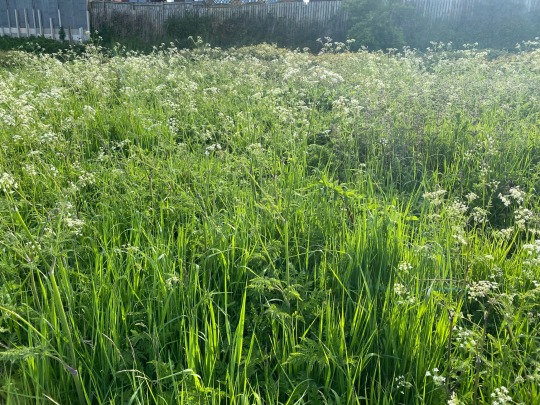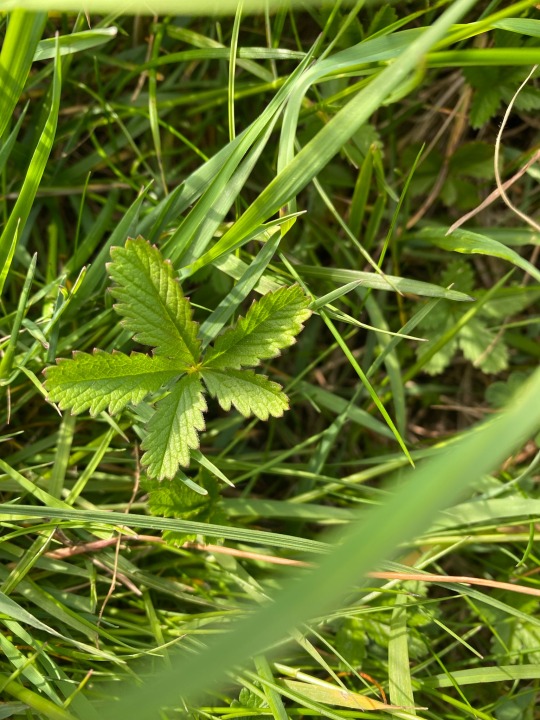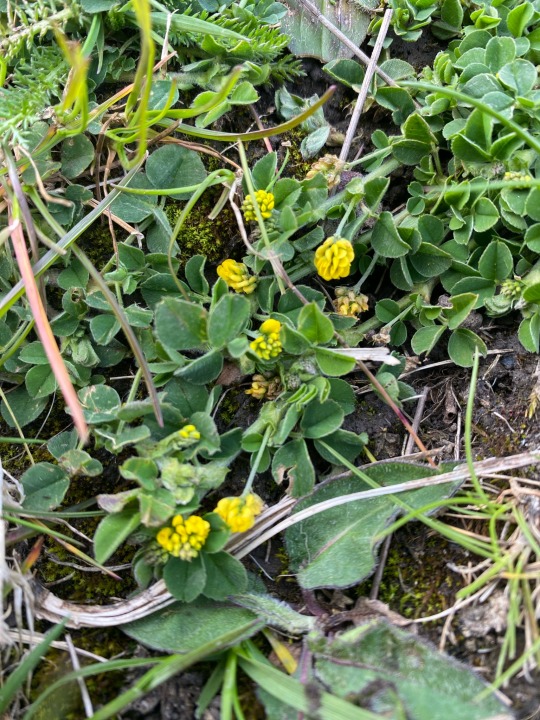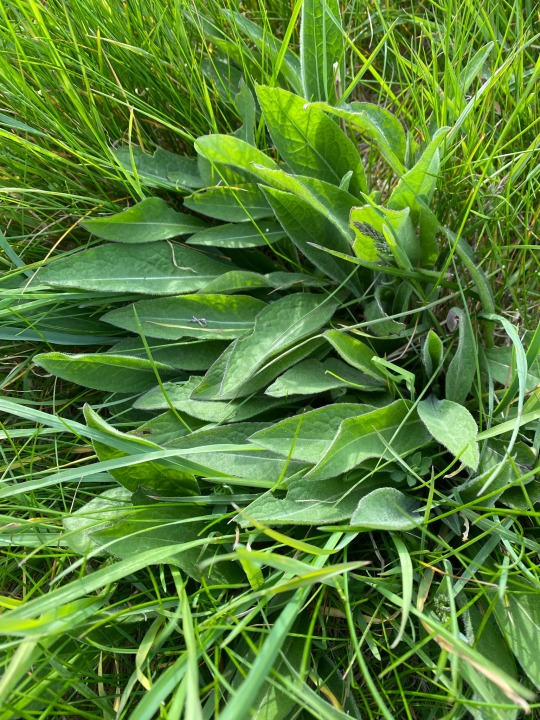Text



recent shrooms… a rosegill of some kind i think, and some great examples of candlesnuff!
i also saw a HUGE jelly ear fungus high up in a tree, sadly no photo, but it was really amazing.
i found these all in a park grassland, the rosegill in an area that has been grazed by a horse. Hence the droppings… Ya can’t win ‘em all
2 notes
·
View notes
Text


July 10 wildflower pot update! — i have had this in my drafts since july, and forgot to post it.
i can now say for sure what everything in here is.
so we’ve got some rose bay willow herb standing tall on the far left, then the other tall plant is some cornflower!




inside we have some (i think) birds foot trefoil, yellow rocket, wild carrot, and salad burnet!

then we have this guy. i was interested in this fancy looking clover, so i did some research! It’s a crimson clover, native to southeastern europe and southwestern asia, and is also known as the italian clover. it is cultivated across europe and is also an invasive in the united states (since the 1800s when it was introduced as a cultivated crop)
1 note
·
View note
Text








some mushrooms i’ve seen in the past month :-) first of all we got some classic inkcaps i found beside some laying deadwood, which is in the second photo. i’m not sure exactly what that small cluster of mushrooms is at all… It was solid and rubbery to the touch!
then we got some waxgills, and a singular (iconic) rosegill!
at least i think these are what they are. i’m not very good at mushroom ID!
1 note
·
View note
Text





A worlds biggest size of pool and a Worlds biggest heart of puppy
8 notes
·
View notes
Text

june 27 update! they’re so much bigger after all the sun and rain we’ve had!


wildflower pot update (-: 29th may to 10th june!
got some wild carrot, rose bay willow herb, clover, maybe a plantain, there’s one i recognise but can’t remember the name of currently, came up in a survey once… and some others i cant identify with full confidence at their growth stage!
6 notes
·
View notes
Text






some lovely fixed dune species you can find at the coast here!
here we have…
common yarrow
pyramid orchid
creeping restharrow
lady’s bedstraw
and a spotted orchid!
the last photo shows a bunch of horsetails surrounded by bird’s-foot trefoil, too!
the area was mostly made up of tall grasses with areas of the trefoil and restharrow. of the two orchids, although quite rare and only found in small groups scattered around, the pyramid orchid was still much more common in ratio.
it’s been so cool recurrently visiting the beach and seeing which flowers come out first! for a long time throughout spring only the trefoil (and some geranium) was present, but now there’s all this variety!
0 notes
Text


wildflower pot update (-: 29th may to 10th june!
got some wild carrot, rose bay willow herb, clover, maybe a plantain, there’s one i recognise but can’t remember the name of currently, came up in a survey once… and some others i cant identify with full confidence at their growth stage!
6 notes
·
View notes
Text








some new photos from field A (-:
the only new species i’ve found to be on the field is Shepherd’s Purse, which you can see in the third through fifth photographs!
otherwise, what we have here is
1) some kind of bee orchid! i’ll keep an eye on it to see when it blooms! i remember seeing a strange flower here a few years ago too. it might have been this orchid. i don’t know much about them!
2) lovely photo of puppy among the buttercups (-:
6) some kind of grass? i’m really not sure in this one!
7-8) kobe among the lovely bird’s-foot trefoil
if i find out what that weird grass is, i’ll update this post (-: it made me think of sand grass, but it’s… well obviously not in sand
2 notes
·
View notes
Text






everything’s blooming on the field and it’s really lovely (-: not much to say about it, i just love spring!
here is some dewberry, common vetch, red clover with lamb’s-tongue/hoary plantain, field buttercup, a photo of a LOT of cow parsley along the western border, and herb robert!




and here we’ve got a puppy, some red clover, some kidneyvetch in the second photo, and two types of trefoil!
The ones with the big, yellow flowers are bird’s foot trefoil, and the patch with tiny yellow flowers is lesser trefoil! i have several photos on the blog already of these pre-bloom. it’s so exciting to see them in full bloom!
these flowers are very hardy and very common throughout britain, enough to be considered a “weed” by many despite how beautiful and cheerful they are. same story as with a lot of british native grassland flowers, unfortunately!
0 notes
Text







some photos i took on the dunes at beach A!
dunes are formed on beaches with a wide breadth; as the wind blows inward from the shore on sandy beaches, beach grasses such as matron will root in the loose sand and give it structural integrity. the sand will up the bank, crest the peak, and settle behind, building up dunes! the grass is crucial to this process.
you get a lot of variation in plant life depending on the stage of the dune — embryo dunes, mobile dunes, or fixed dunes, which transition into grassland typically.
the order of these photos goes, from first to last, from the dunes closest to the coast to those furthest away. they are in order:
semi-fixed dunes:
coltsfoot and … i think a form of restharrow? i am not sure! — coltsfoot gets its name from its hoof-shaped leaves. it is a flowering plant! none were flowering yet though.
bird’s-foot trefoil — another generalist, but i see it most along the coast. it is the larval food of the common blue butterfly!
fixed dunes:
bloody geranium — this gets its namesake from its new growths, which appear bright red!
ragwort — a generalist of a flower than can be found in most grasslands!
grassland:
white deadnettle — another generalist
hemlock — a generalist often found near path sides, as this one was. i believe it is hemlock rather than cow parsley due to the purple splotches on its thick stem.
dove’s-foot crane’s-bill (a geranium)
here are some other photos of the dunes that show a variety of other plants:



these were all taken in the semi-fixed to fixed dunes! we have in order:
goose grey and some more bird’s-foot trefoil
miniature daisies and mouse-ear hawk weeds
dandelion, hawks bit, common yarrow, and meadow pea!
there was so much to see on the dunes, and i definitely did not cover all of it. i believe a majority of the grass was marram grass. i also saw a lot of snail shells, and some sycamore trees were encroaching down the hill (although they weren’t doing great!)
the surrounding area is magnesium limestone that is unique to the northeast of england, meaning that the cliffs here are alkaline rather than acidic. it is also rich in calcium and, of course, magnesium — which gives us great potential for species richness and contributes to the uniqueness of our heritage coasts. most of our magnesium limestone comes in the form of dolomite!
5 notes
·
View notes
Text
cow parsley VS cow parsnip!




this is something i get muddled up a lot. they're very similar names, and superficially they do have some similarities. so in this post i'll explore what both of them are and describe the differences, so i never forget again!
for full disclosure: the left is cow parsley, and the right is cow parsnip!
Similarities
cow parsley is an umbellifer, and a common member of the carrot family. the name "umbellifer" comes from the fact that its flowers grow in small, half-dome clusters (called umbels) which resemble an umbrella! they are attractive to a wide range of pollinating insects, and even small mammals like rabbits.
the cow parsnip is also an umbellifer, with visually-similar umbels of tiny, white flowers.
they both inhabit a mix of grasslands, farmlands, woodlands, and urban areas (such as roadside verges, gardens, and graveyards). they can grow well in both sunny and semi-shaded habitats. they are also both hairy on their stems!
so, what's the difference???
Differences
Size


here are two photos of the plants next to a human, for size reference. (the left image is taken from this delightful video exploring the ecology of the cow parsley)
cow parsley (left) is a plant well-known for its delicate appearance; its umbels are small, its stem thin.
cow parsnip (right), unlike cow parsley, is the notorious B.I.G.! the umbels of the cow parsnip are distinctly bigger, and can grow to over 6ft tall! needless to say, it also has a distinctly thicker stem.
Leaves


here are the same photos as above, showing a clear distinction between the two's leaves!
cow parsley (left) has light, airy, and distinctly fern-like leaves.
cow parsnip (right) has solid leaves that can grow up to 40cm wide and are divided into lobes.
now that i've written this, maybe i'll stop muddling up their names!
Extra
and this isn't even to go into the similarities between cow parsley and hemlock -- but the short end of that distinction is that hemlock has reddish-purple blotches on the stem, which cow parsley does not have.
there's also pignuts, which look visually very similar again -- but are in fact very small!
youtube
this video i mentioned further up is perfect for learning the difference between pignut, hemlock, and cow parsley, if you're interested
0 notes
Text




getting down to some nitty gritty looking really close at field A today!
we’ve got what i believe is the invasive spanish bluebell, likely from the neighbouring school and housing estate. not great. you can tell the difference as english blue bells have all the flowers on one side, giving them a droopy look — this has flowers growing on all sides and it’s quite straight because of that!
next we’ve got ribwort plantain! this is another plant that does well in very open and disturbed areas. it has tiny, pale flowers on yellow stalks from april to october, and the seed heads act as a food source for birds during the winter months.
the third image seems to show some common bird's-foot trefoil, or at least some kind of trefoil! this is the only example i've found on the field so far. they flower from may to september. if i'm right, it should have small yellow flowers that look like slippers. it is a perennial herb in the legume family that is very particular in how it is pollinated. i'm going to take new photos of this when it flowers to see if i'm right!!
the final photo, i'm not sure, but i believe it might be common vetch. this is another perennial legume with purple flowers. it's another species that's well-evolved for high-disturbance, urban areas and is quite common on your average field. all of the other species i've noticed on this field also are!
0 notes
Text
as an update, I’m on the field right now and I can confirm that there is quite a lot of creeping cinquefoil on the flat part of the field as well!



also, i want to note that lamb’s tongue and a majority of mosses are most common in areas with more bare soil, that are used as main pathways throughout the field. these are also the areas that are bordered with a majority of the field’s daisies and dandelions.







some new photos from field A, my local field! it is a wet species-poor grassland, which i believe is also nutrient poor. i’m not sure about the pH, but i assume it’s quite neutral!
the first photo shows some creeping cinquefoil, a type of plant that thrives in low-quality, nutrient-poor soil. it is a pioneering species similar to the black medick! it has small yellow flowers similar to buttercups from june to september.
i think there’s a multitude of reasons for this plant in particular to be present. the field has a downward slope on both the western and northern sides, which plateaus out toward the southeastern side. the most cinquefoil i saw was on the slopes where the soil would be most free-draining, so it makes sense it would be seen there.
the second photo shows some black medick, a pioneering plant that thrives in well-draining soil. i found this in the same area as the cinquefoil, further indicating the low soil quality and free draining conditions. i say it indicates poor soil quality as the black medick is a pioneer species, meaning that it colonises bare and rough ground to prepare it for less hardy species!
the third photo shows some fairy ring champignon that regularly occurs on the field! this only shows part of the total ring; a range of it was still covered in long grass, so there weren’t as many mushrooms on that side. it benefits from the freshly cut grass. their season is april to november, with the best season for collecting them being late spring! they prefer soil that is sandy, and with lower water / fertility. poorer nutrient levels line up with the other species present on the field, and while the conditions aren’t completely to its preference (this is definitely a wet grassland) it is still able to grow!
the fourth photo shows again some lesser knapweed, a hardy perennial plant that flowers in early summer to as late as september. it is a great contributor for pollination despite being considered an undesirable weed, which is a common theme. it is a generalist that tends to prefer wetter soils. this knapweed can be found throughout the field, both on the banks and across the flatter area as well!
the fifth photo shows a large patch of creeping thistle. this is an area toward the central-northeastern corner of the field that is regularly covered in tall thistles, and grows back whenever it’s cut! it is perennial, and being “creeping” means that its roots literally creep through the soil in order to spread, which allows the creeping thistle to be a competitive coloniser. this is possible due to the plant being dioecious, meaning it has both male and female parts. this of course means that the patch is a clonal colony that self-reproduces, too! it does this in tandem with regular reproduction via pollination. it blooms from june to august. this is another competitive generalist species that can be found in any kind of field, as well as along roadside verges and even growing on driveways!
the last photo wasn’t taken on the field, actually, but on the way back. it shows a dense (and quite tall!) patch of creeping buttercups beside a house! i just thought this was cool. i’m excited to see it flowering, hoping that the owners don’t mow it.
3 notes
·
View notes
Text






some new photos from field A, my local field! it is a wet species-poor grassland, which i believe is also nutrient poor. i’m not sure about the pH, but i assume it’s quite neutral!
the first photo shows some creeping cinquefoil, a type of plant that thrives in low-quality, nutrient-poor soil. it is a pioneering species similar to the black medick! it has small yellow flowers similar to buttercups from june to september.
i think there’s a multitude of reasons for this plant in particular to be present. the field has a downward slope on both the western and northern sides, which plateaus out toward the southeastern side. the most cinquefoil i saw was on the slopes where the soil would be most free-draining, so it makes sense it would be seen there.
the second photo shows some black medick, a pioneering plant that thrives in well-draining soil. i found this in the same area as the cinquefoil, further indicating the low soil quality and free draining conditions. i say it indicates poor soil quality as the black medick is a pioneer species, meaning that it colonises bare and rough ground to prepare it for less hardy species!
the third photo shows some fairy ring champignon that regularly occurs on the field! this only shows part of the total ring; a range of it was still covered in long grass, so there weren’t as many mushrooms on that side. it benefits from the freshly cut grass. their season is april to november, with the best season for collecting them being late spring! they prefer soil that is sandy, and with lower water / fertility. poorer nutrient levels line up with the other species present on the field, and while the conditions aren’t completely to its preference (this is definitely a wet grassland) it is still able to grow!
the fourth photo shows again some lesser knapweed, a hardy perennial plant that flowers in early summer to as late as september. it is a great contributor for pollination despite being considered an undesirable weed, which is a common theme. it is a generalist that tends to prefer wetter soils. this knapweed can be found throughout the field, both on the banks and across the flatter area as well!
the fifth photo shows a large patch of creeping thistle. this is an area toward the central-northeastern corner of the field that is regularly covered in tall thistles, and grows back whenever it’s cut! it is perennial, and being “creeping” means that its roots literally creep through the soil in order to spread, which allows the creeping thistle to be a competitive coloniser. this is possible due to the plant being dioecious, meaning it has both male and female parts. this of course means that the patch is a clonal colony that self-reproduces, too! it does this in tandem with regular reproduction via pollination. it blooms from june to august. this is another competitive generalist species that can be found in any kind of field, as well as along roadside verges and even growing on driveways!
the last photo wasn’t taken on the field, actually, but on the way back. it shows a dense (and quite tall!) patch of creeping buttercups beside a house! i just thought this was cool. i’m excited to see it flowering, hoping that the owners don’t mow it.
3 notes
·
View notes














